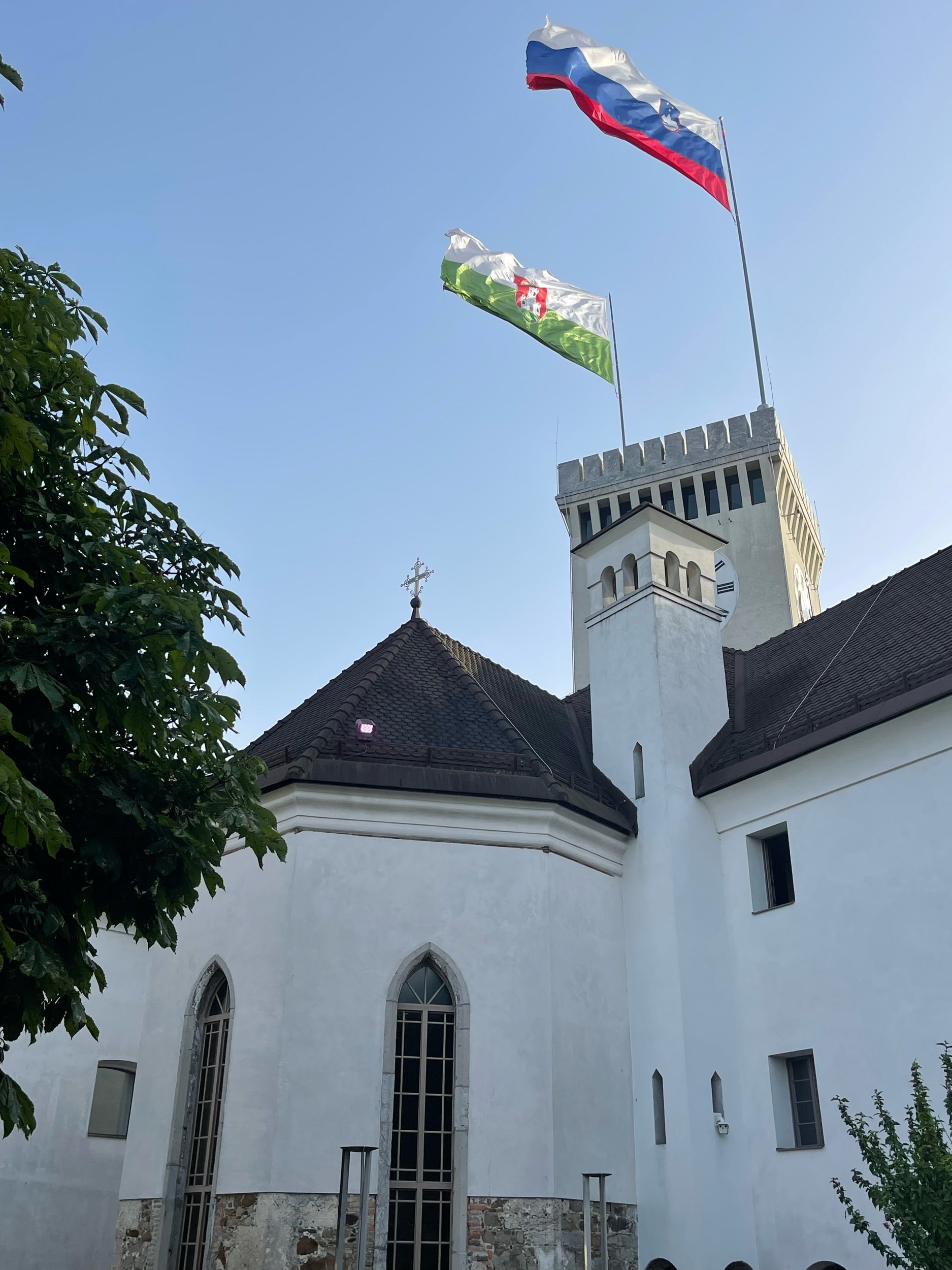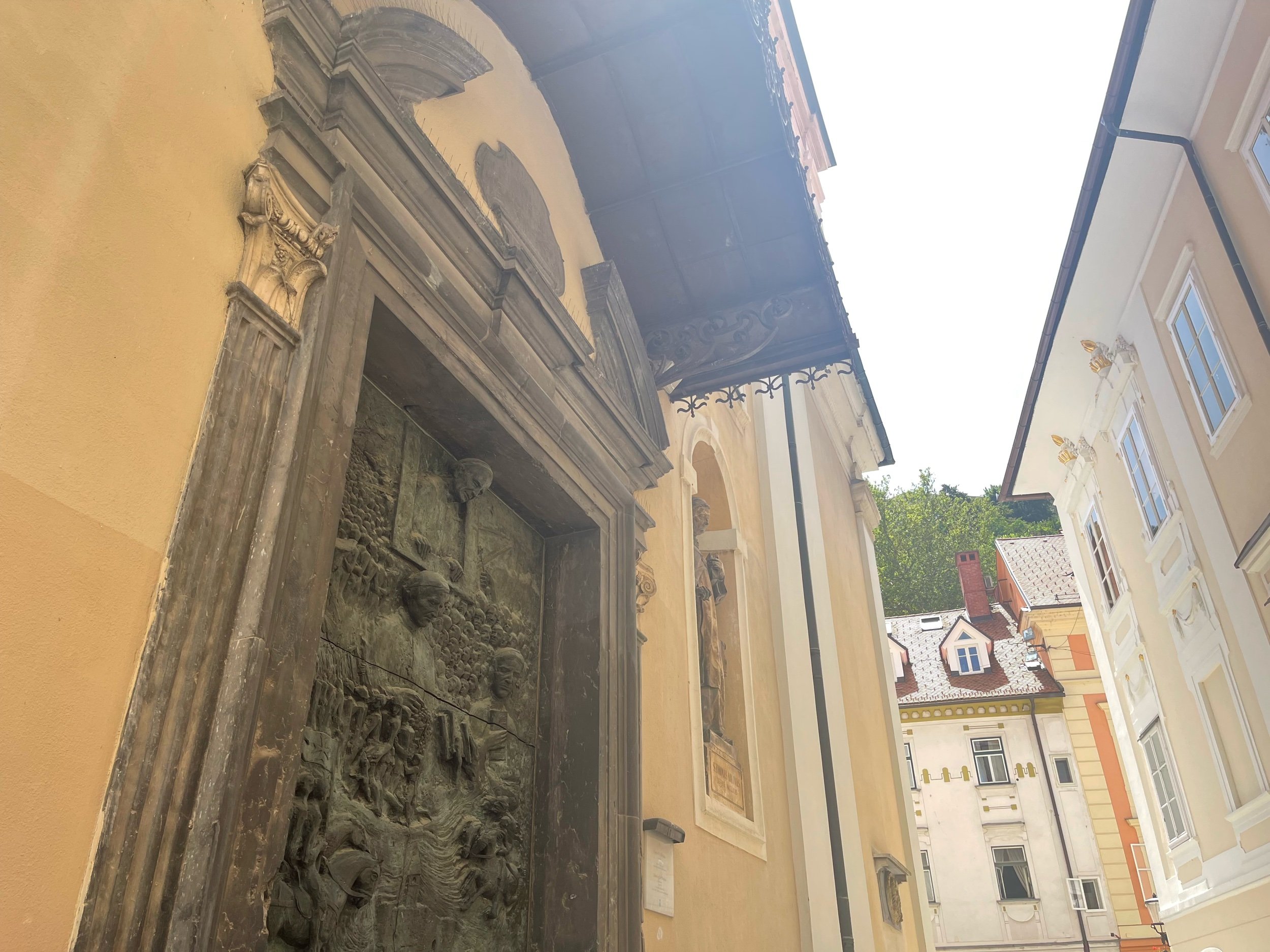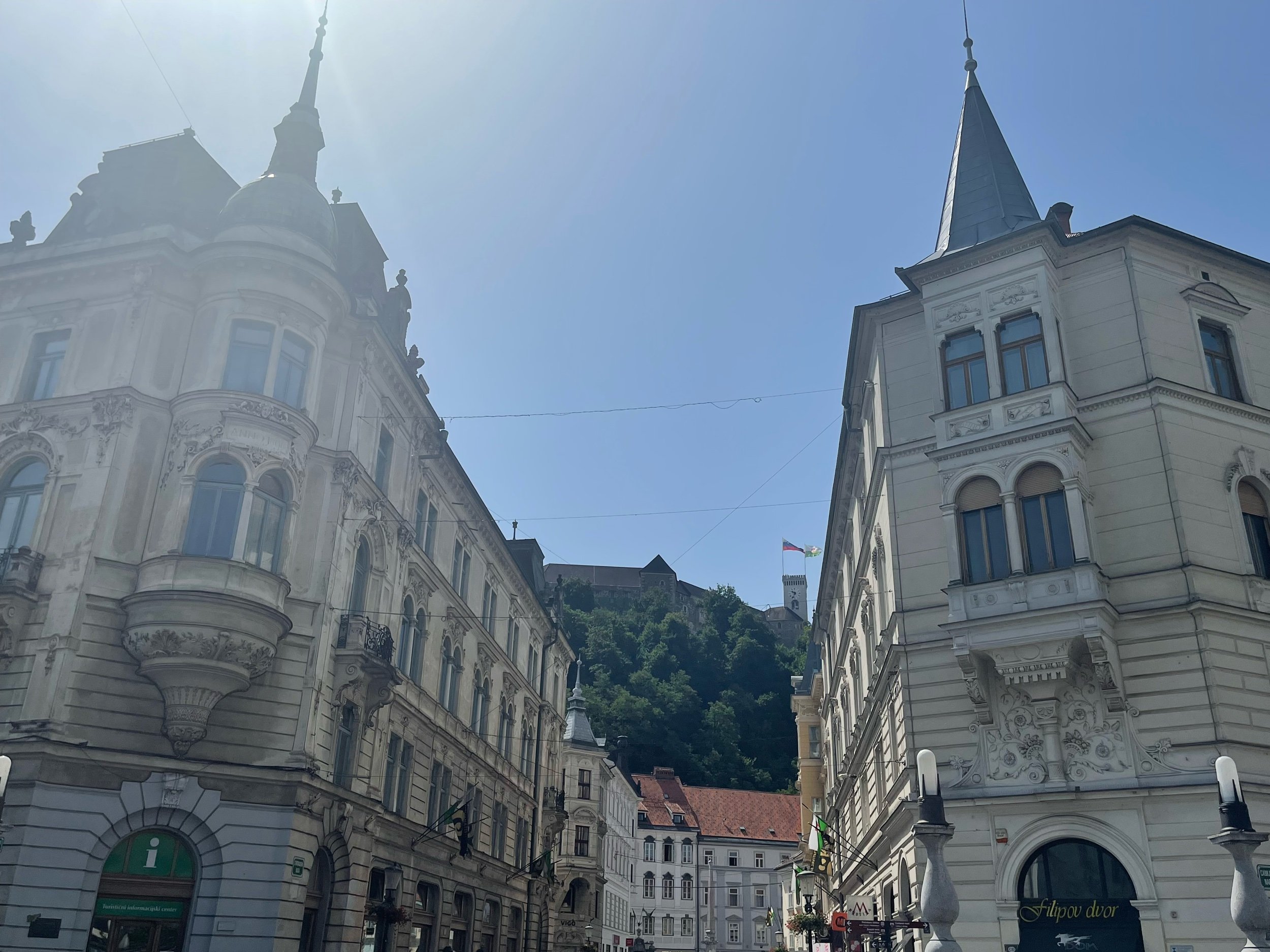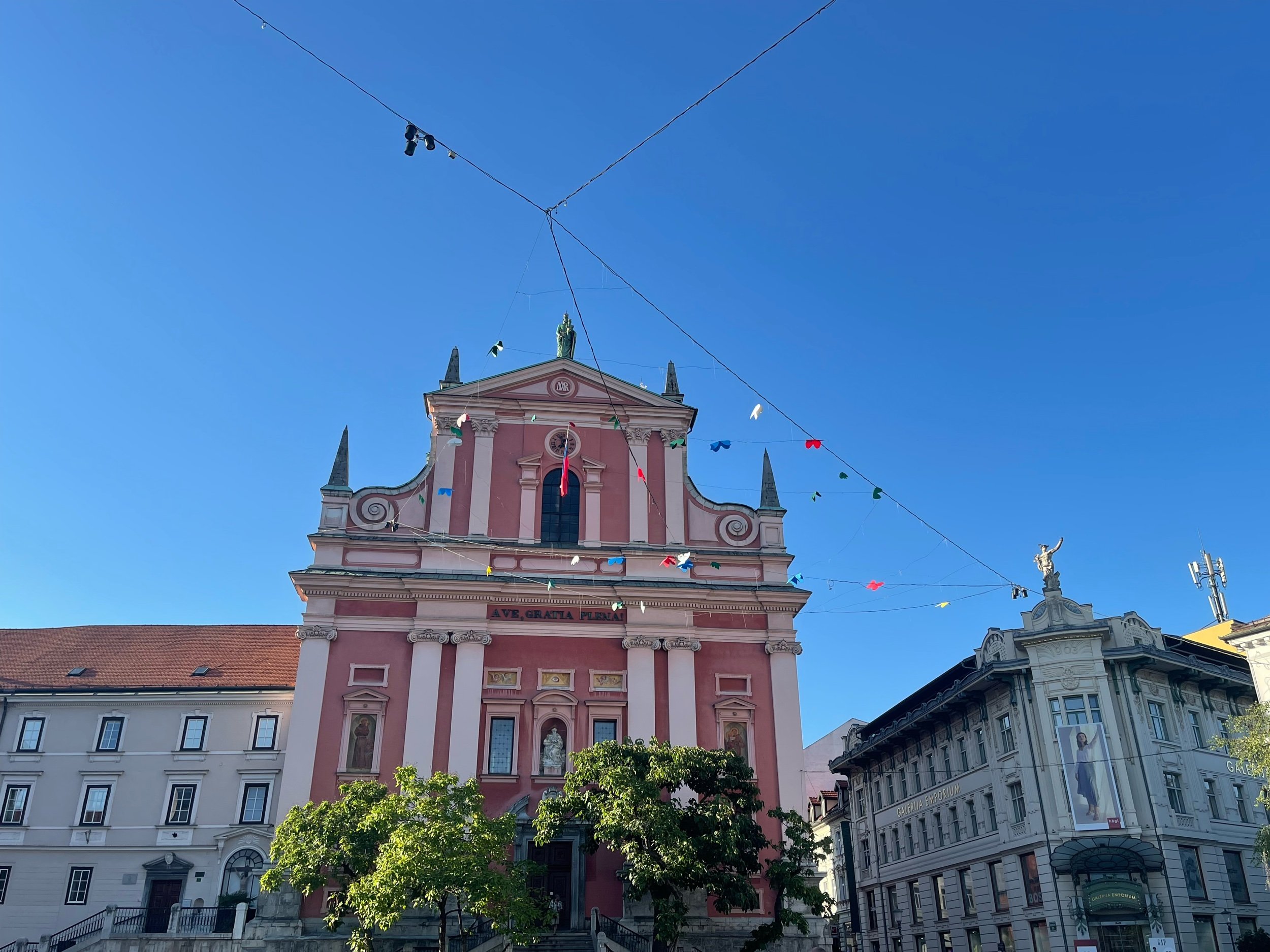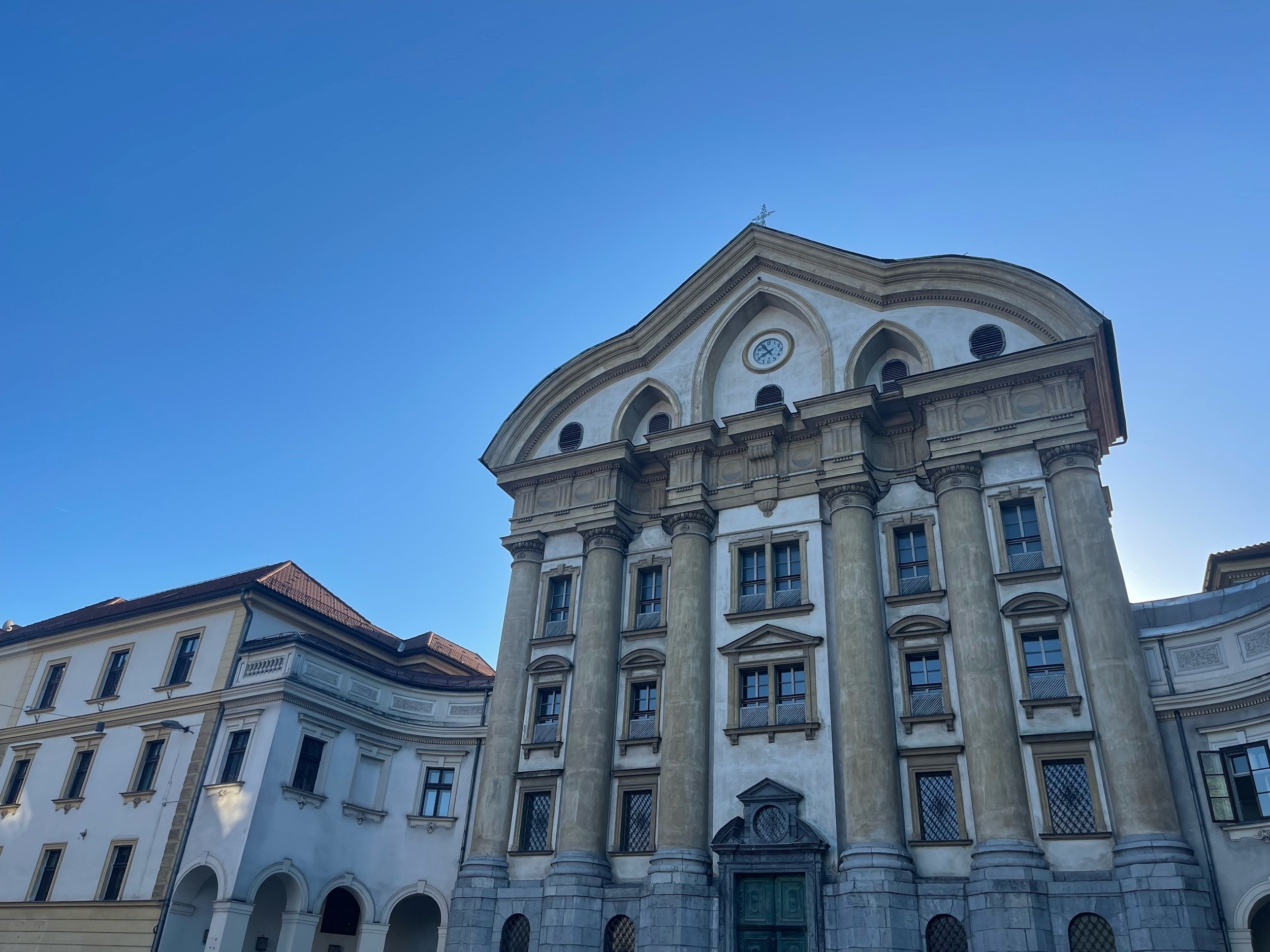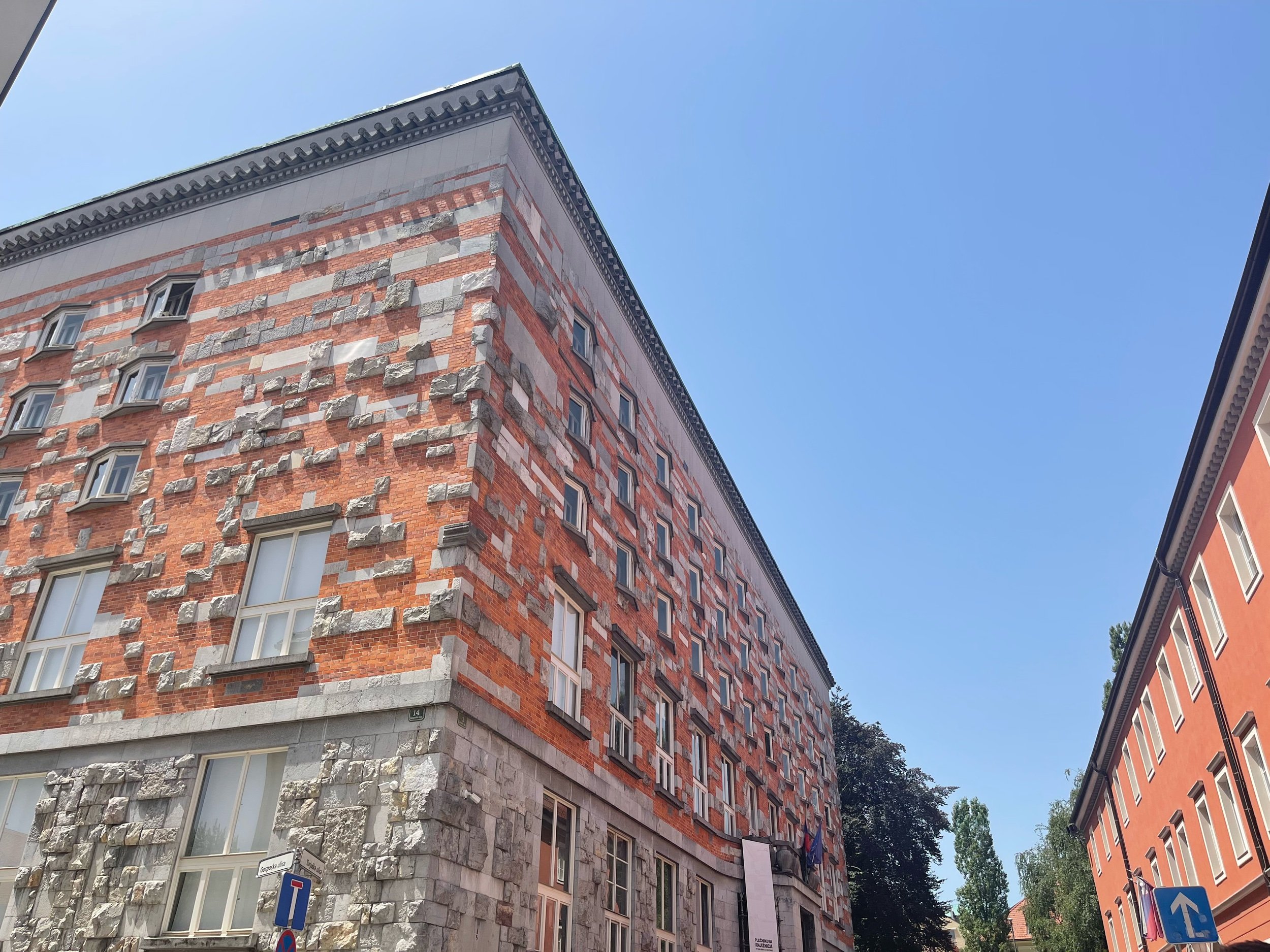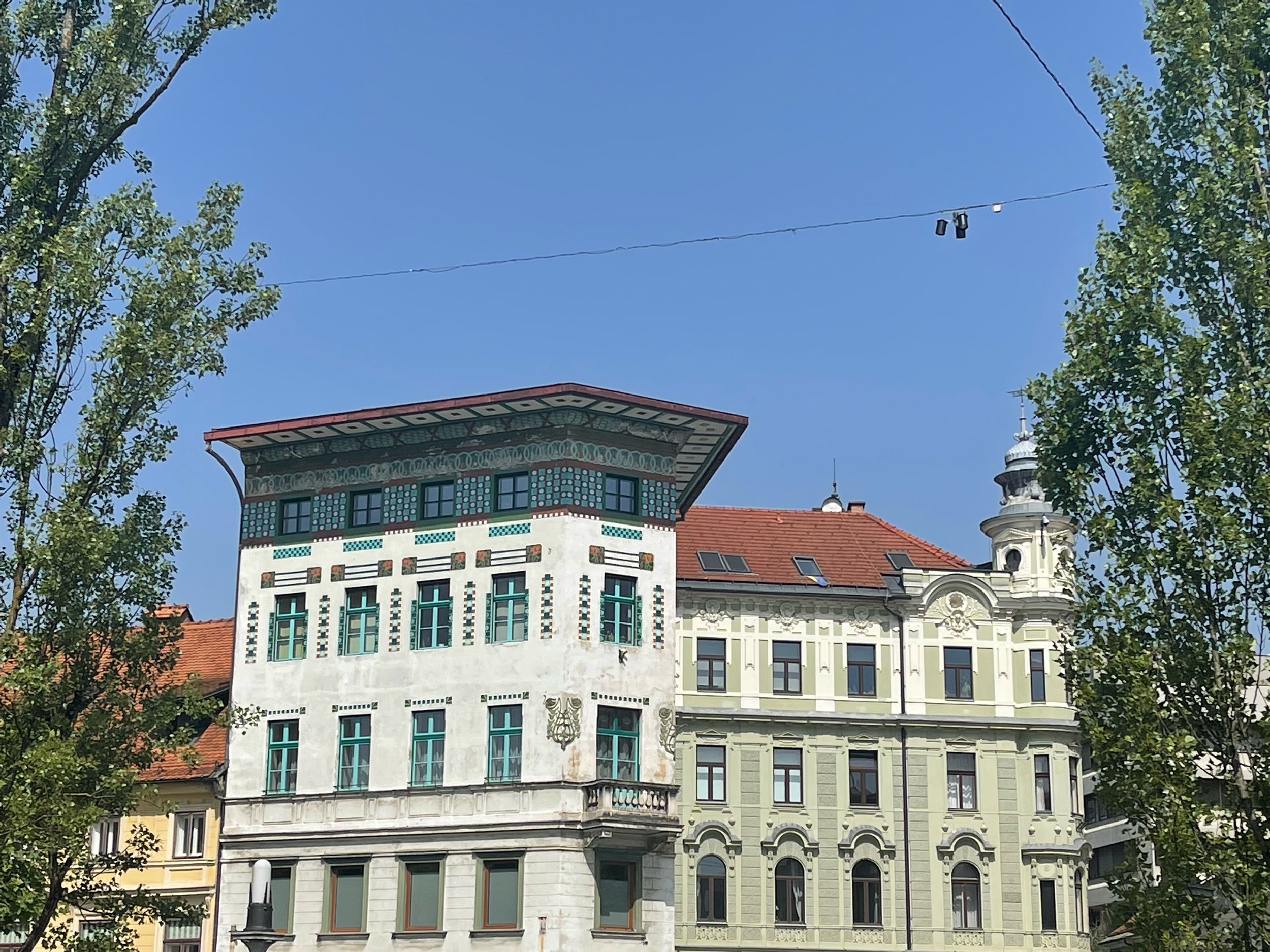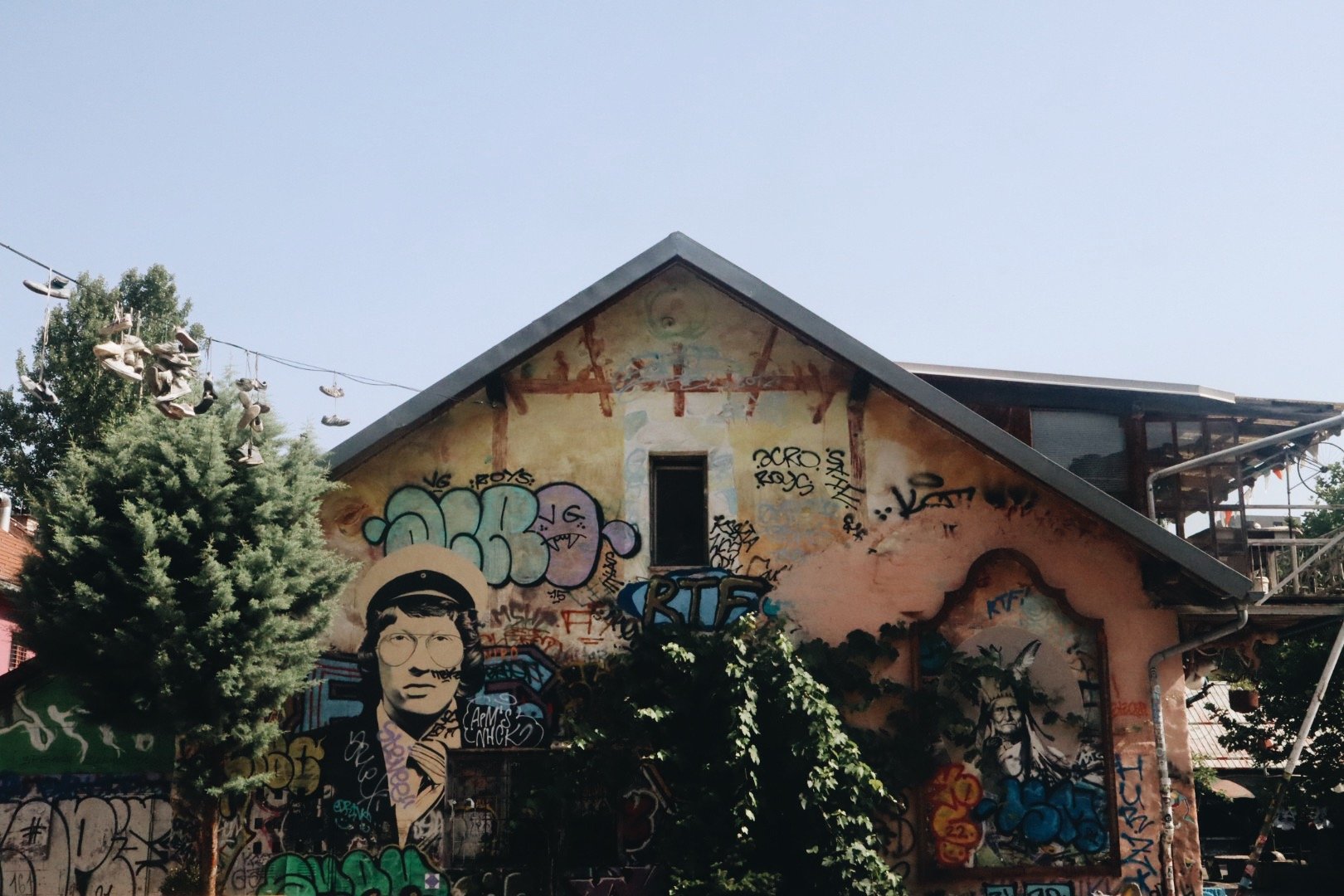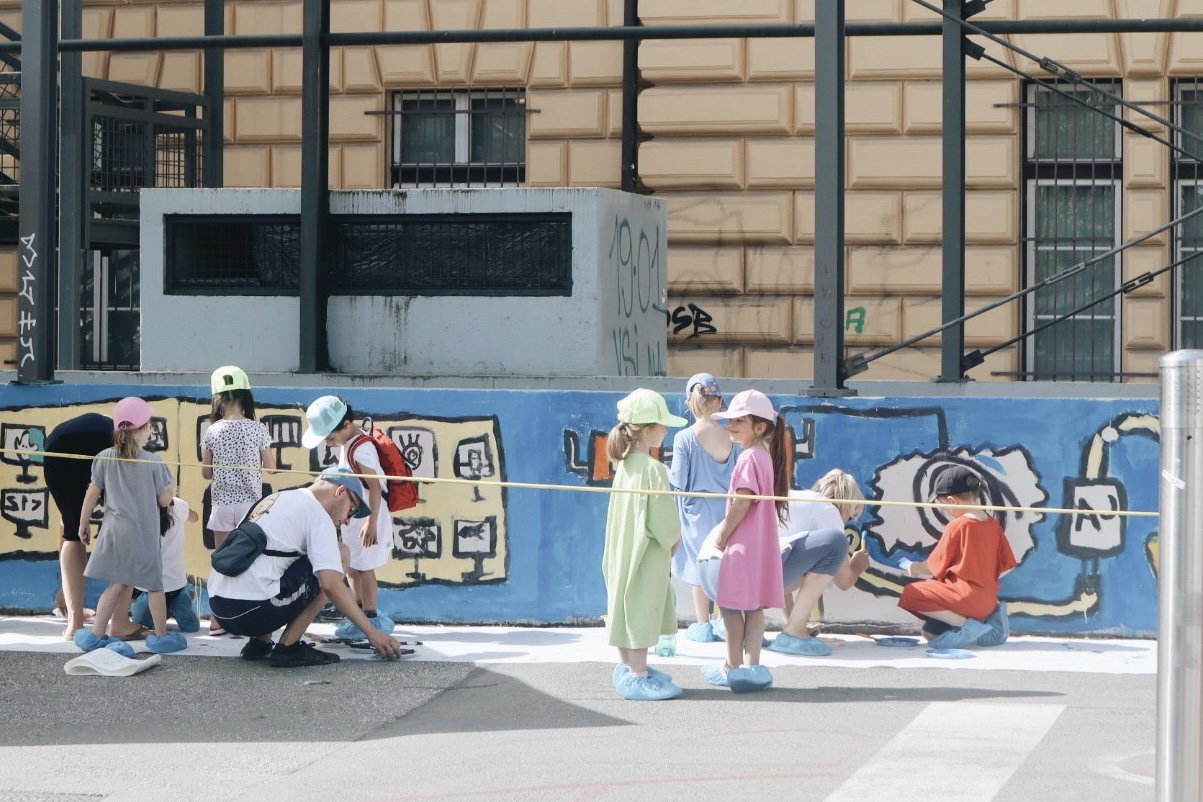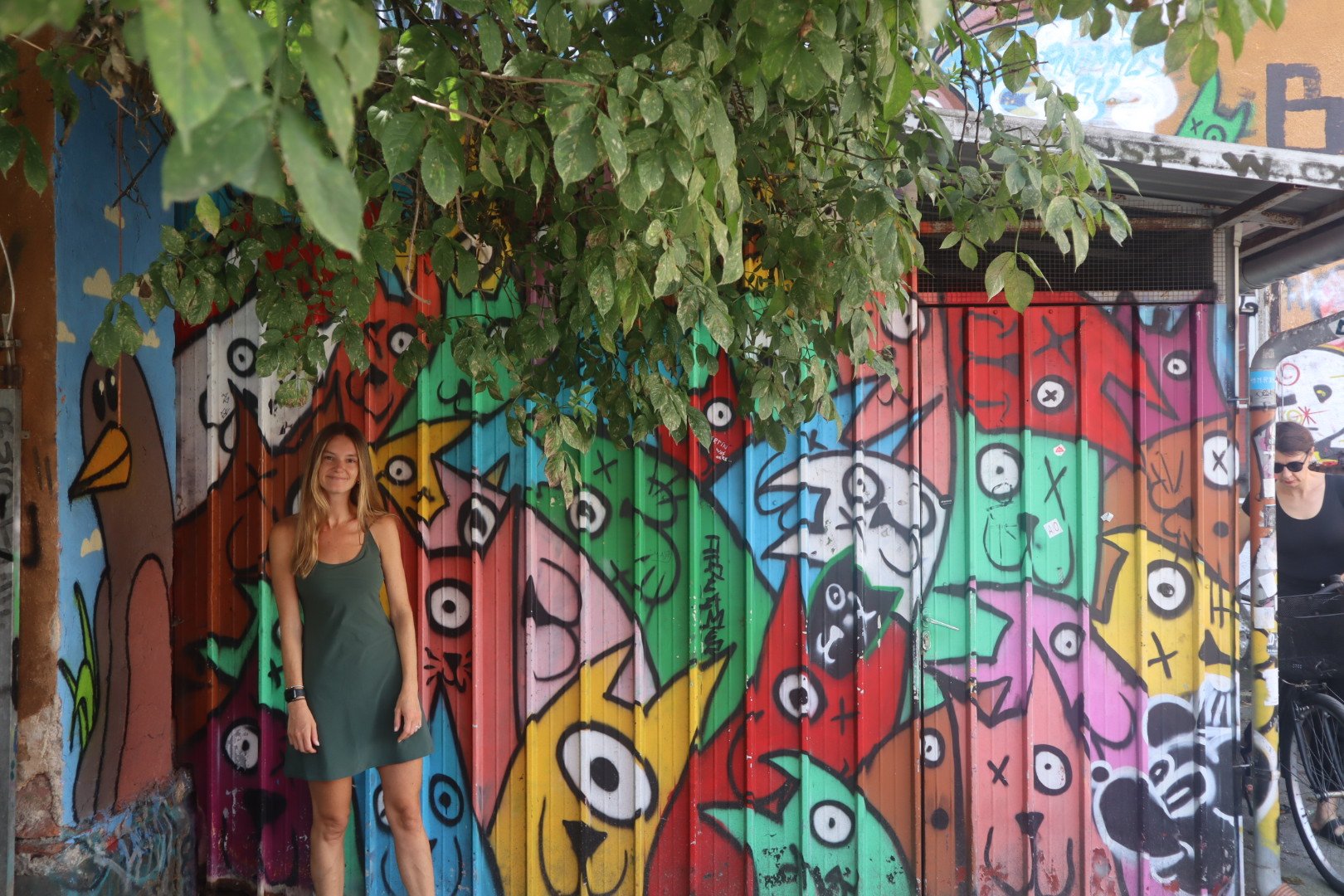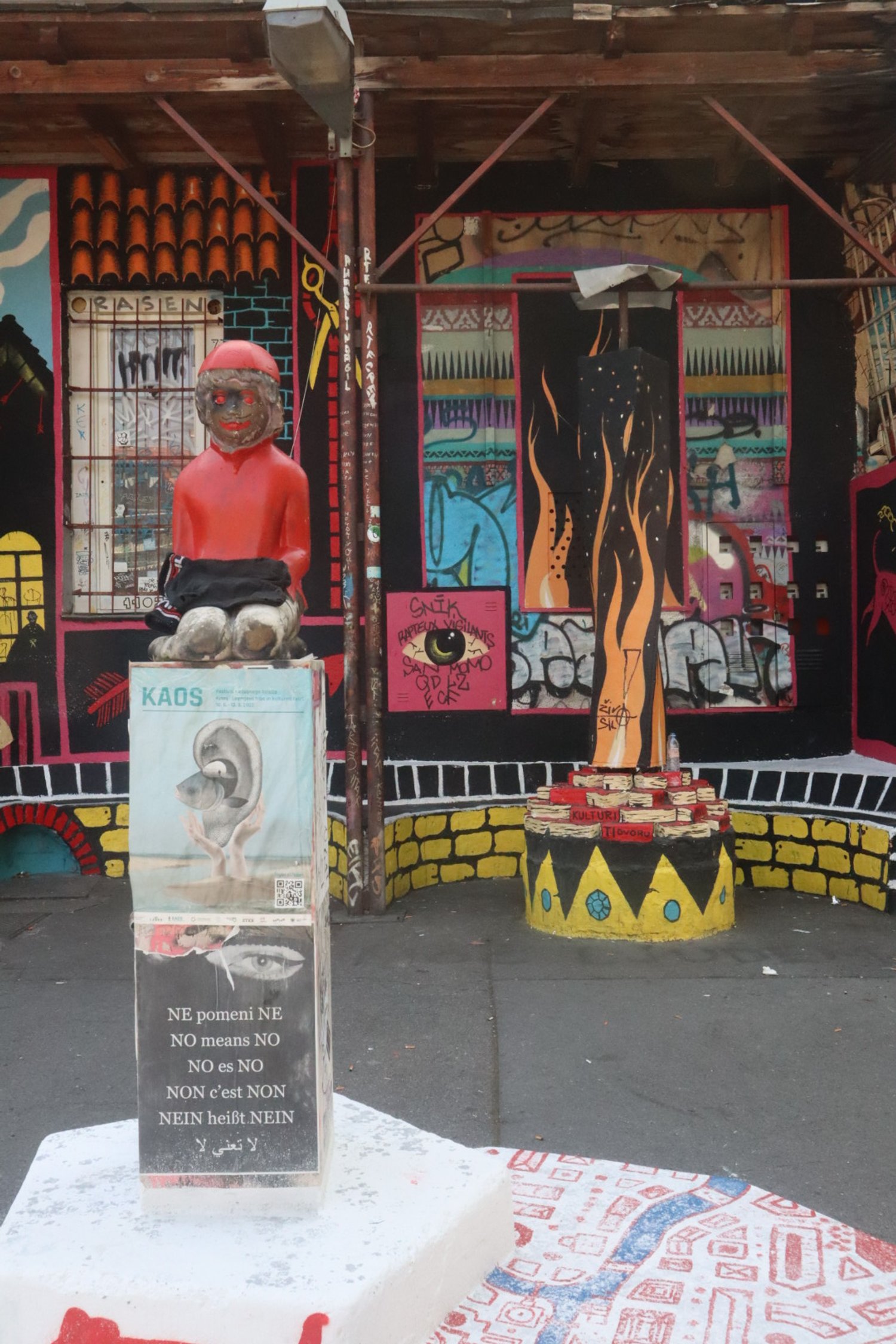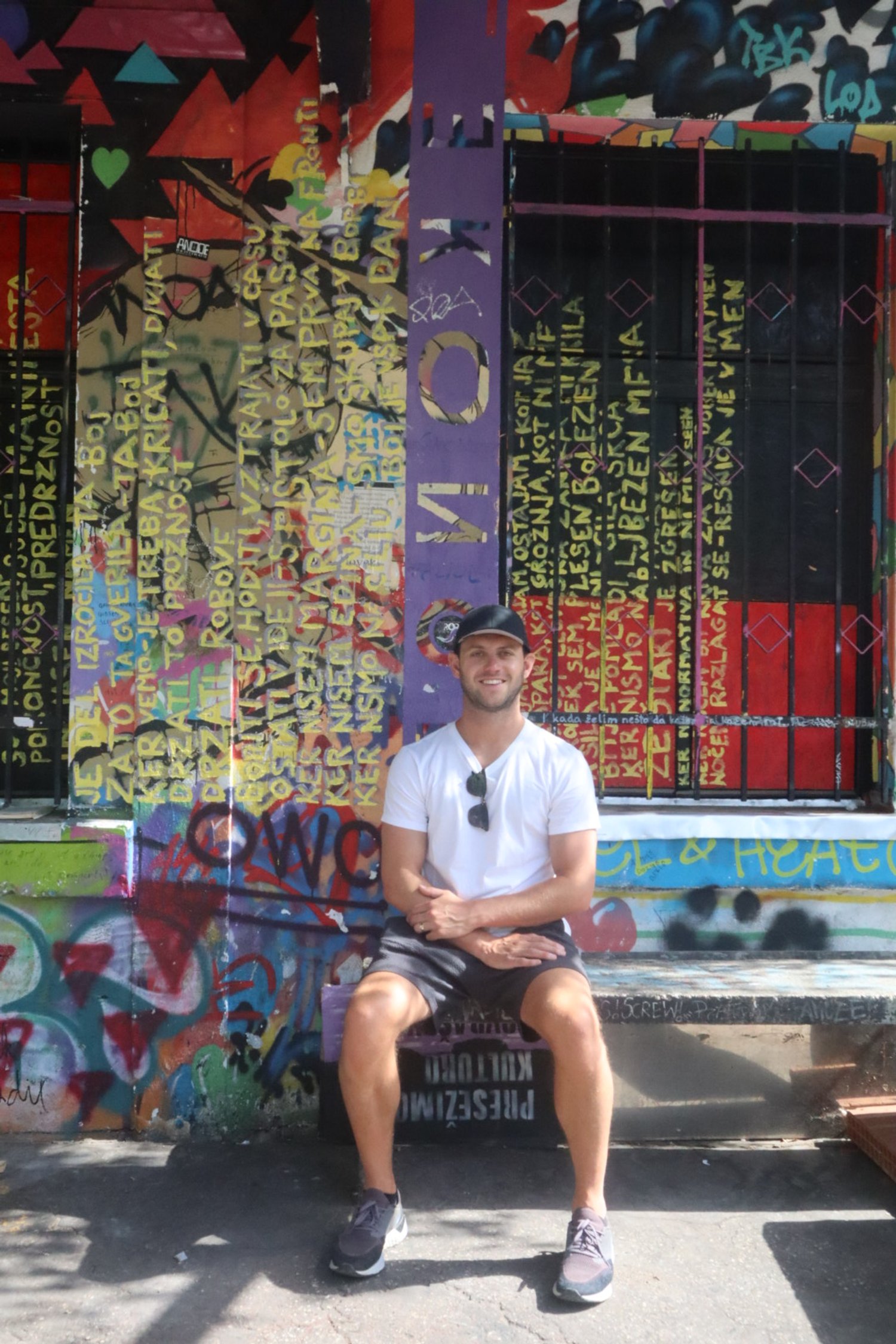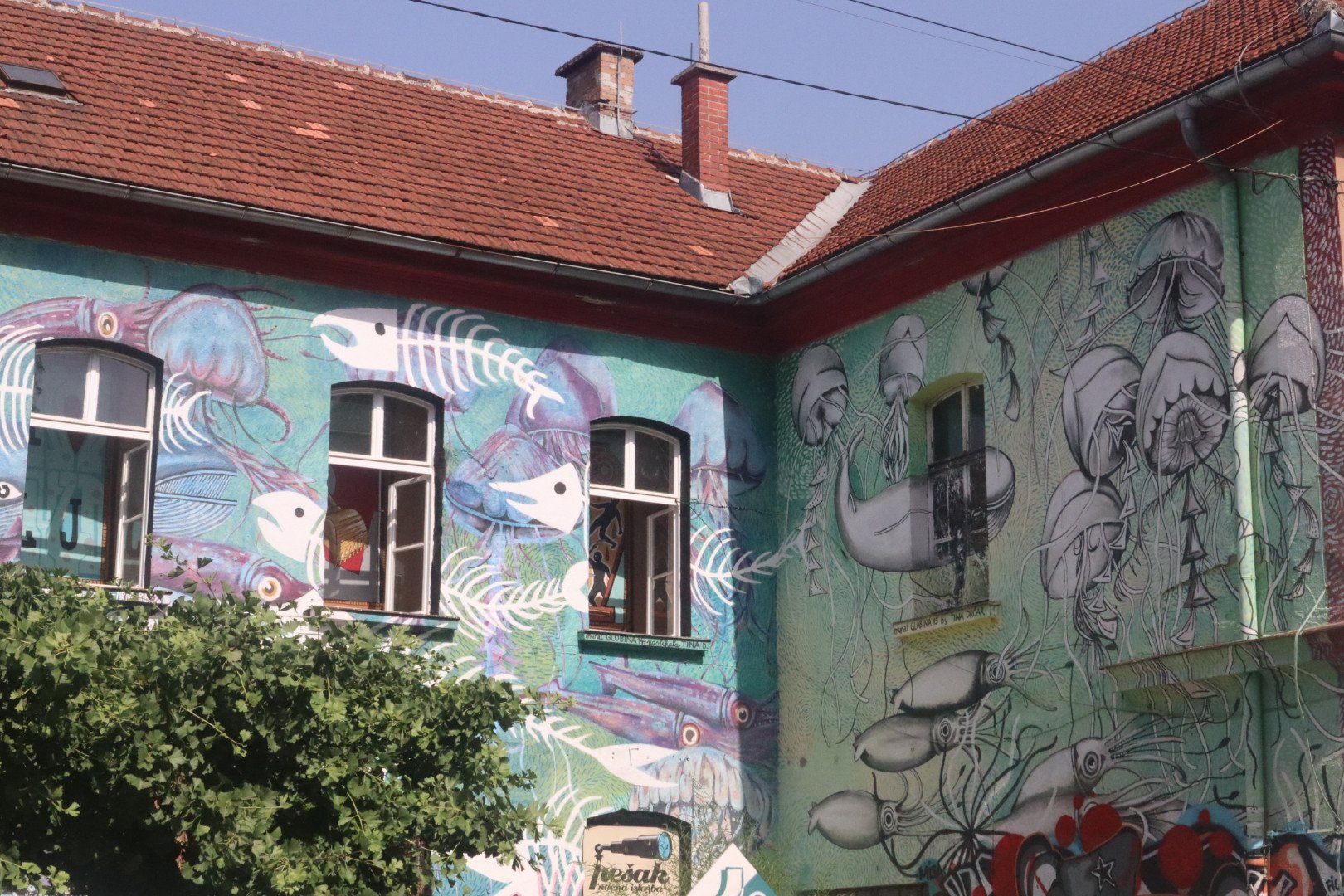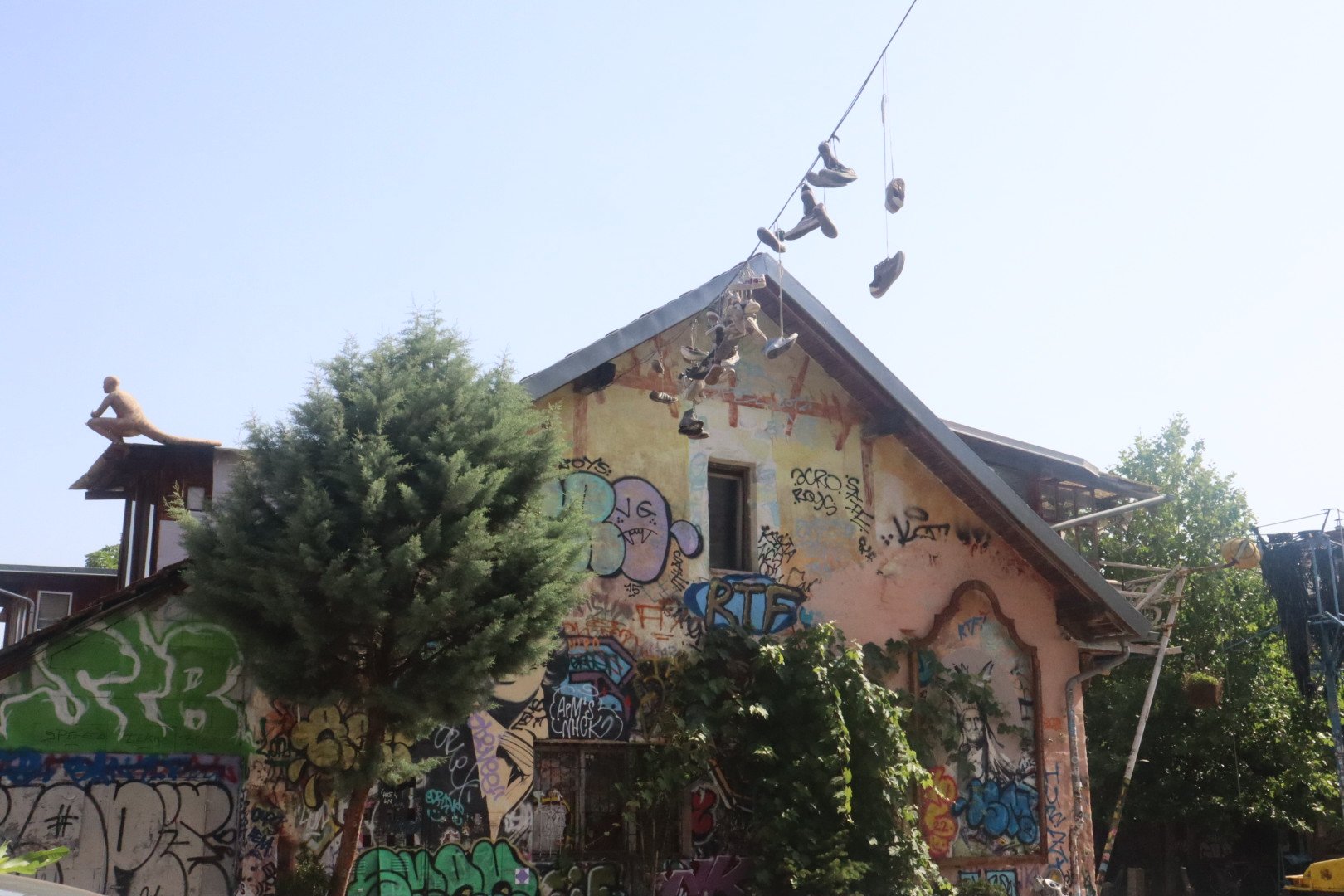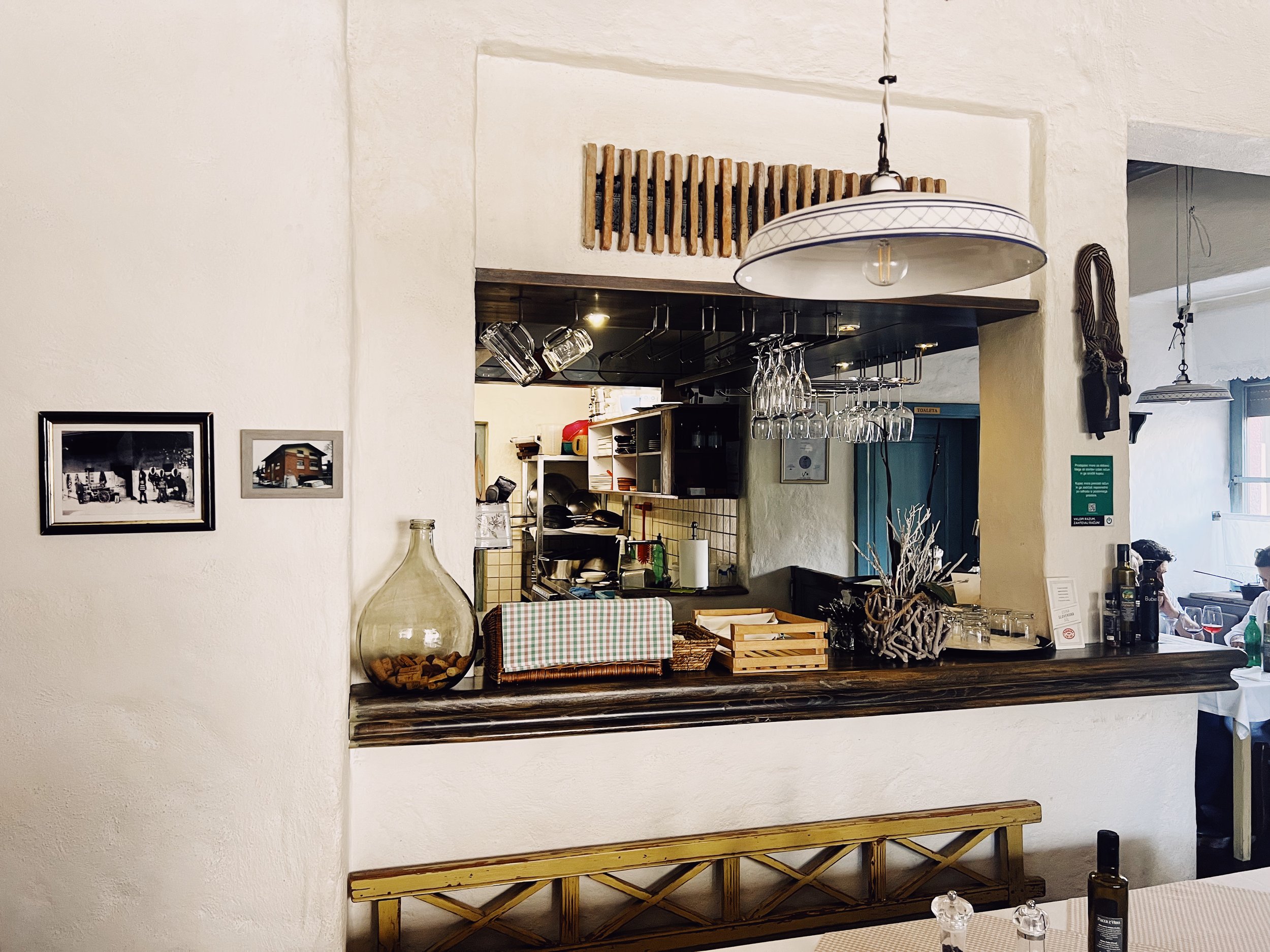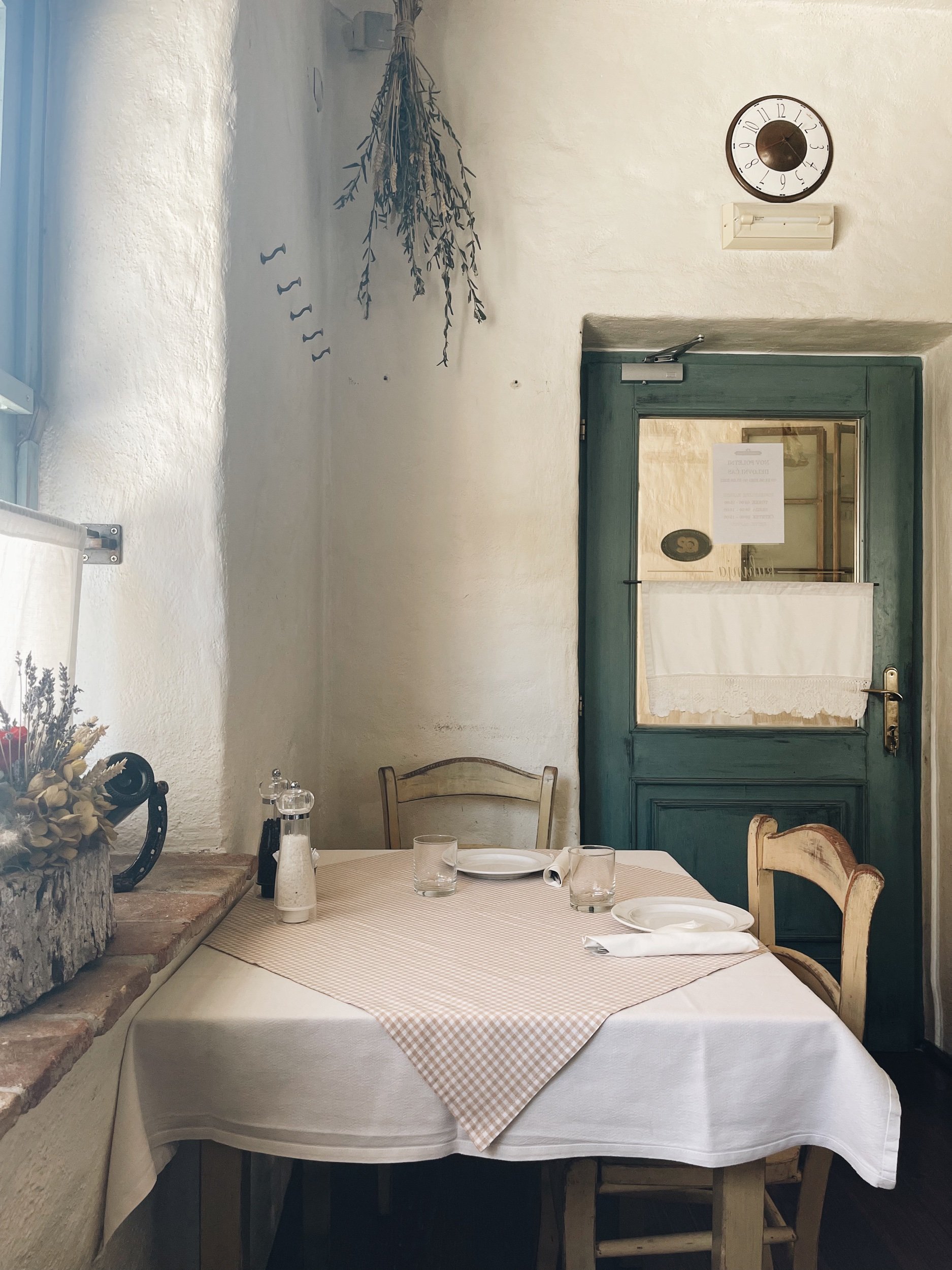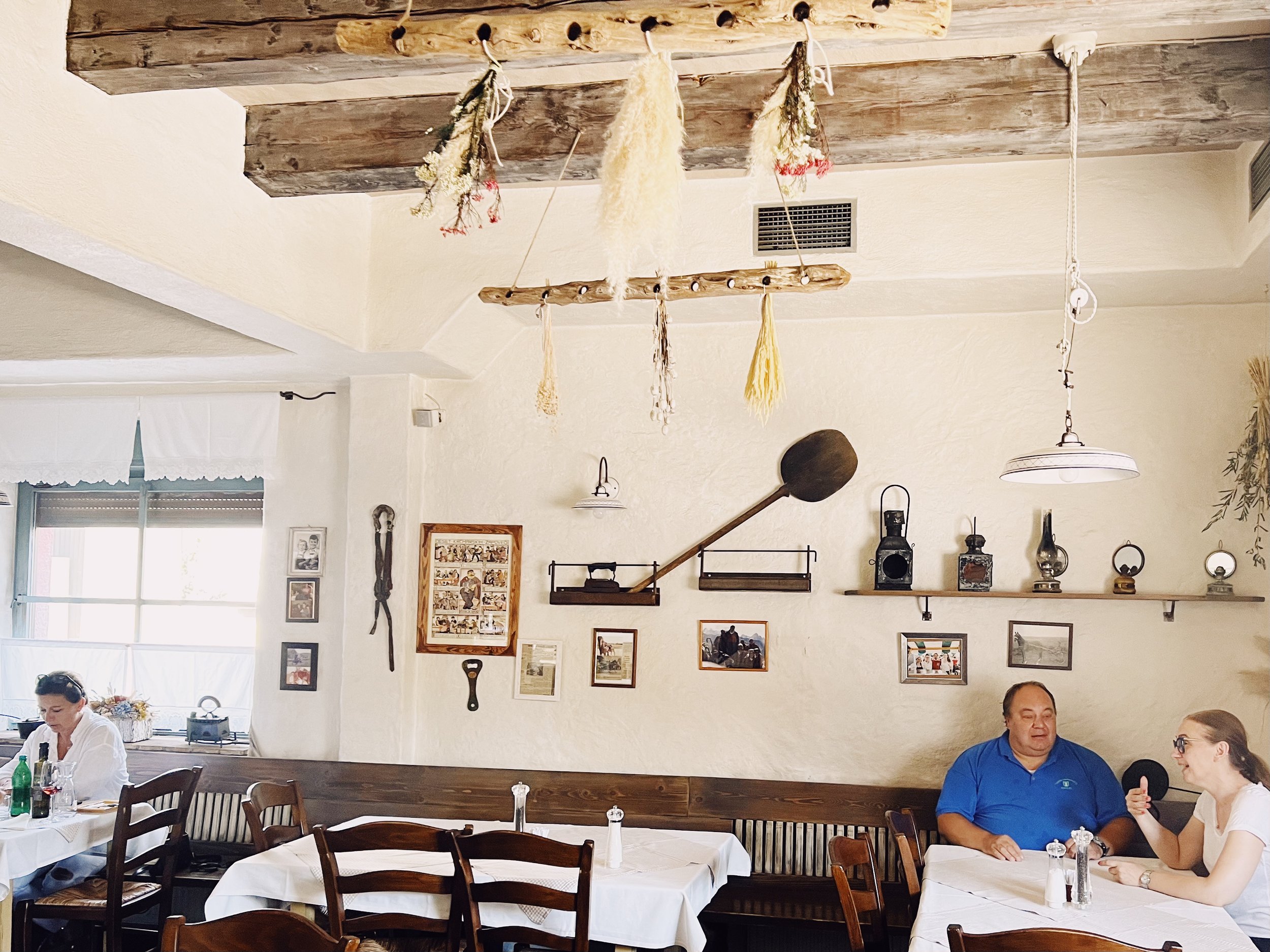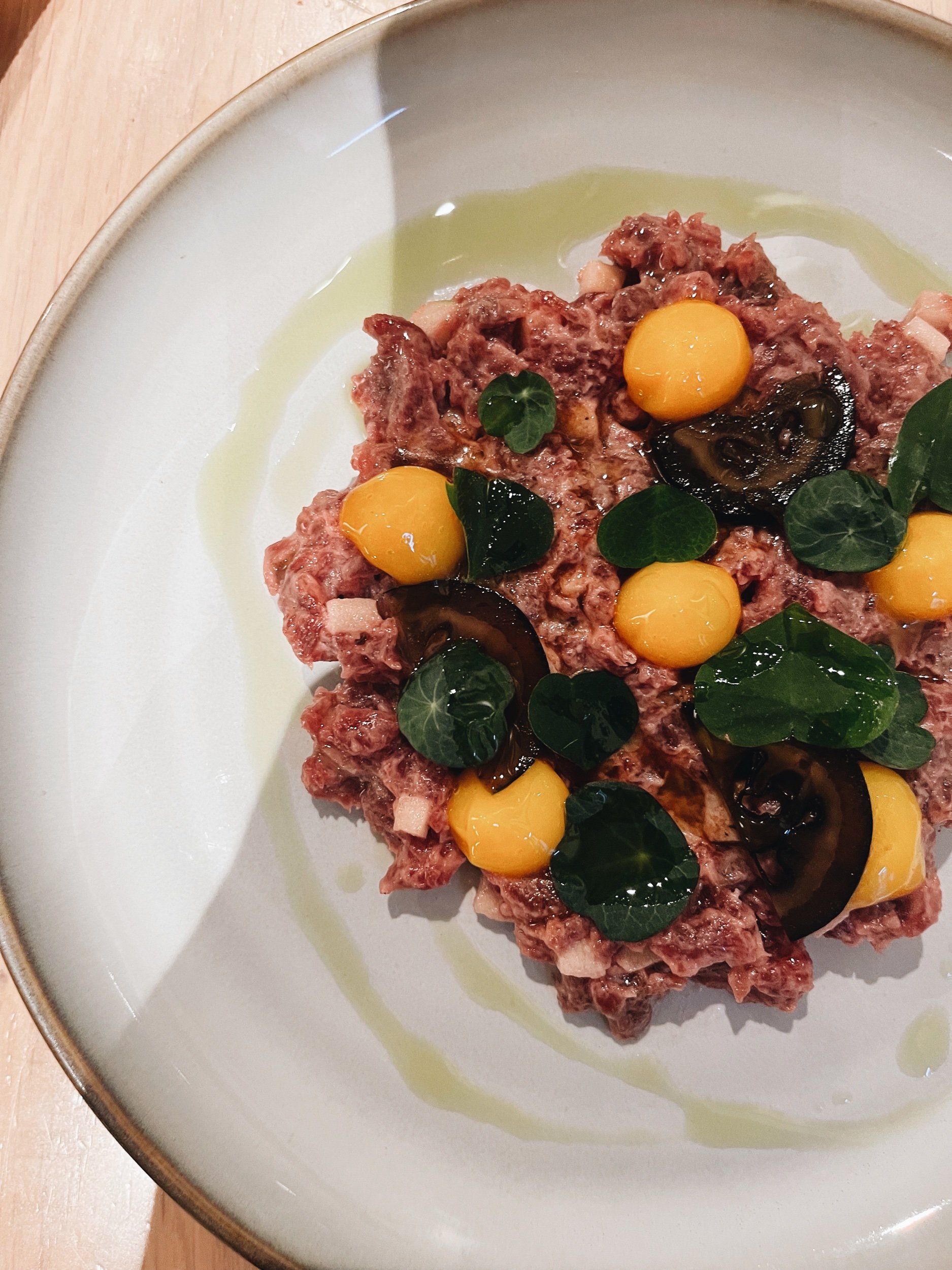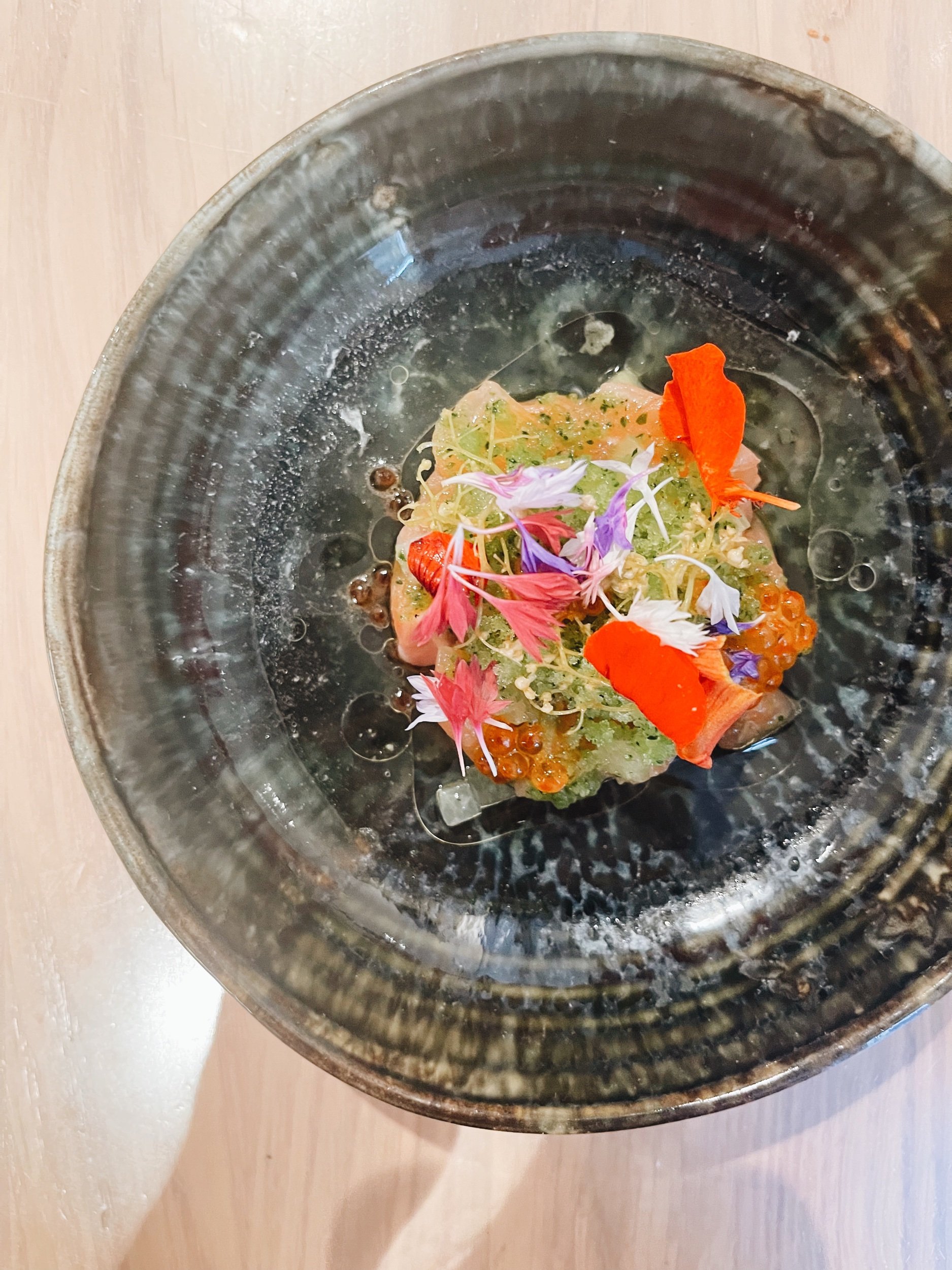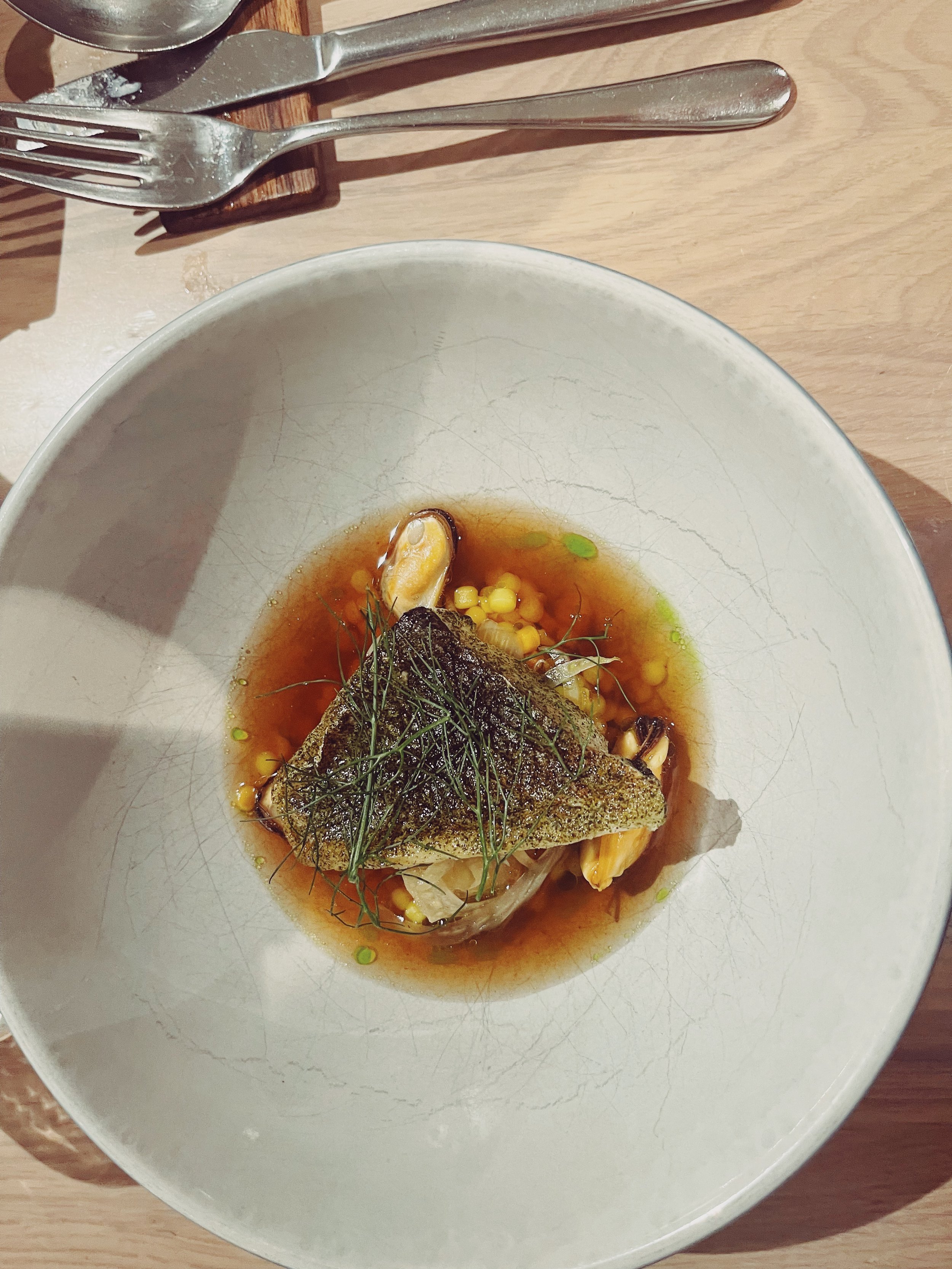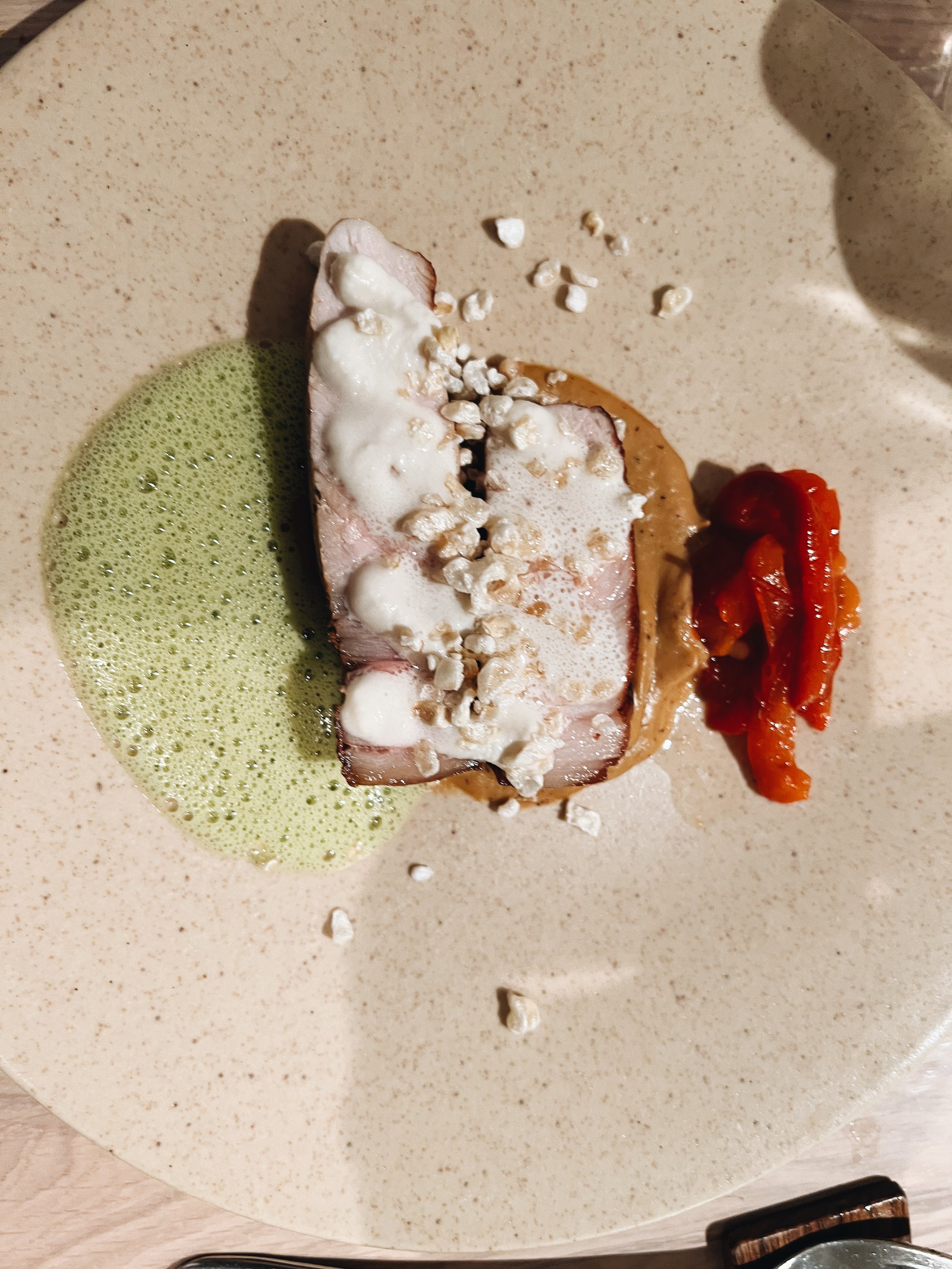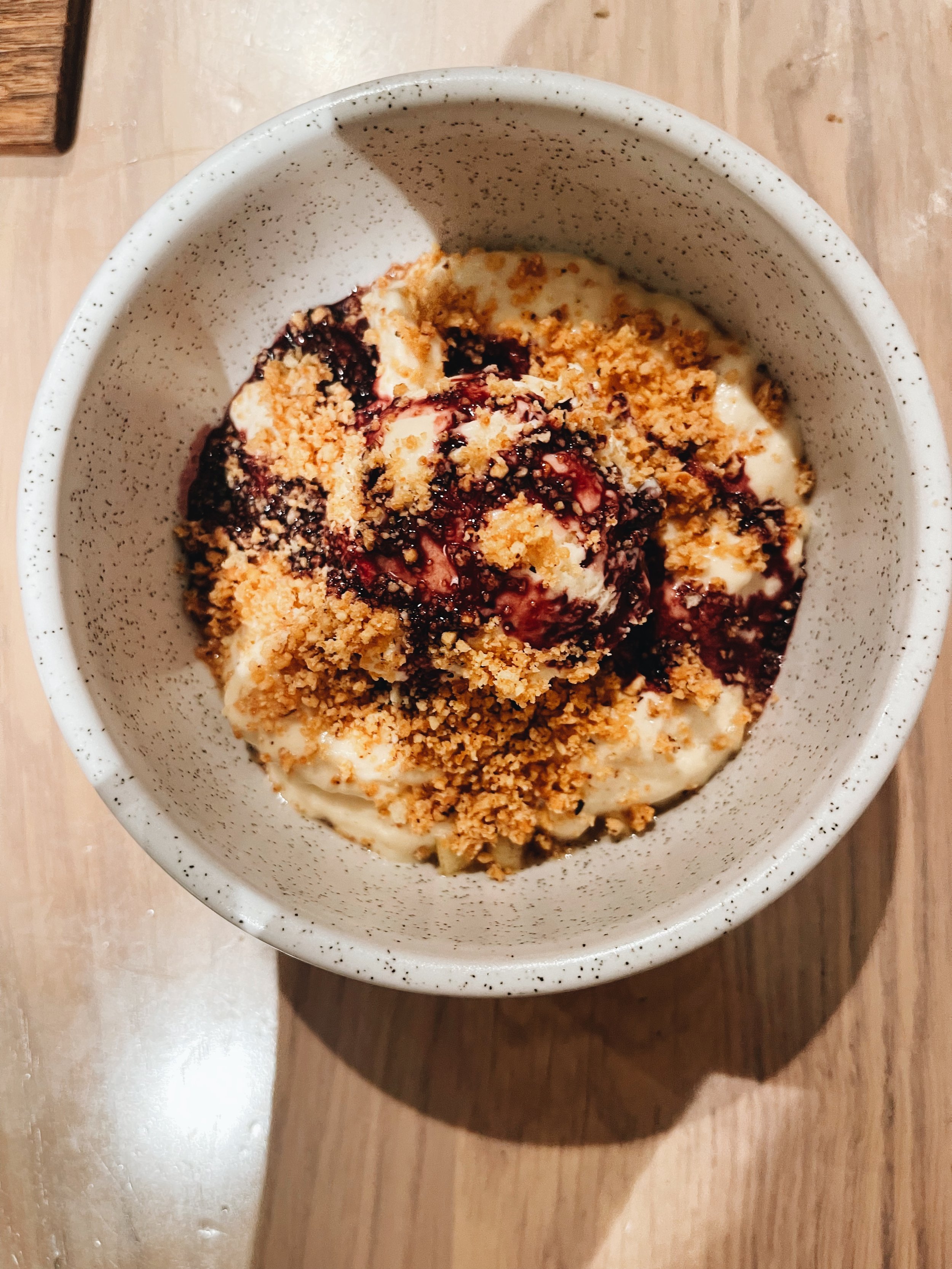Ljubljana: Old World, New Flavors
An evolving cultural identity, shaped by the region’s past.
Baroque churches and colorfully decorated buildings wind their way around the river as willow trees drape over the walking path, providing much needed shade as we ventured into Ljubljana, Slovenia. While sitting at a cafe outlining the Ljubljanica River, I sensed this old world vibe permeating from the quaint capital city. There was a fantastic realization that this place was different from other cities I’ve been to. But I couldn’t quite put my finger in why.
Call it the lack of intrusive McDonalds or the presence of the aforementioned castle perched above, but it was clear that American culture hadn’t fully infiltrated Ljubljana. Don’t get me wrong - the town was very open to tourism. Flocks of people were guided around on free walking tours and the cafes always felt busy. But Ljubljana had yet to be inundated with trinket shops or fridge magnets stands that plague other popular tourist destinations. Through the conversations we had with locals, baristas, and restaurant owners, Ljubljana was described as a city alive with tradition. But a city also rapidly evolving. We were introduced to different ways this city was balancing old world preservation with the new expansion. This seemed doubtful at first, but through our time here we learned just how special that intersection was in Ljubljana.
Beyond the dragon
On the way to Ljubljana, medieval stereotypes filled our minds with expectations of lordly drawbridges, moats, and castles alike. But as we arrived, we learned that the architecture held more significance than the dragon myths we previously read about. Yes, Ljubljana was built in baroque-style architecture like many rustic, medieval towns that are featured in Travel and Leisure blogs about quaint European towns. And yes, the dragon is the city’s symbol. But the old-world large windows, biblical statues, and pointed spires were only prominent on the east side of the river.
A presence of bright tiles and ornamental designs decorated buildings on the west bank, giving this side of the city a colorful flare; it truly felt like we were walking in two different eras. We later learned that an earthquake shook the city at the turn of the twentieth century, and the west bank of the river was badly damaged. Instead of restoring the original designs, architects began to rebuild the damaged side of the river in Vienna-Secession, a specific style of Art Nouveau, that was characterized by the use of flowing lines and dome facades.
As more architects began to shape the city over the next century, Vienna-Secession became an identity for Ljubljana. Jože Plečnik, a famous Slovenian architect who studied Vienna-Secession, is credited for giving Ljubljana its modern identity. In addition to designing beautiful libraries and theaters, he contributed to major civic improvements. His architectural work on bridge designs (most notably the Triple Bridge), theatre renovations, and government venues all attribute to the success of this city. His pre-war vision of turning Ljubljana into a major metropolitan was achieved, all while maintaining its original Vienna-Secession style.
A neighborhood reimagined
Previously a military headquarters to both the Yugoslav National Army and the Austro-Hungarian Empire, the Metelkova neighborhood continues to stand today - but with a completely different meaning. As we walked through the small neighborhood one morning, traces of run down military barracks were apparent. Covering their walls, however, were expressions of art told through colorful sketches, paintings, and graffiti.
Starting in 1993, after the fall of communist Yugoslavia, underground artists sought out open, creative expression. Instead of tearing down the abandoned army complex that presumably haunted the locals who had yearned for a democratic society, Slovenian artists began to occupy the area. Slowly an art center was born and a creative hub for the city was established. Today, art exhibitions and festivals are hosted in the neighborhood where individuals from all walks of life come together. Seeing the community transform a neighborhood with a communist history into a symbol of free thought was inspiring. It was clear that Slovenians wanted to acknowledge their past but continue to pave new ways forward.
A taste of tradition
Because communism in former Yugoslavia led to food rationing, Slovenian families relied on the immediate land around them to source food. Vegetables like turnips, peppers, mushrooms, and potatoes were commonly grown and cooked down into stews or soups. Residents relied on local livestock as their main source of protein. Seemingly exotic meats to us were abundant and found in most Slovenian households. All of these traditional elements translated directly to the markets and bistros we found ourselves in. Bear salami was hanging from windows and goat thighs were served as elevated fare. But there was one specialty meat that seemed to tower over the rest - horse meat.
The preparation options today were endless - burgers, steaks, stews, and salads. A once local staple had transformed into a celebrated culinary tradition. While not served at all establishments, we were told this was still a commonly eaten protein by Slovenians and only a few places in the city really did the meat justice. Admittedly we were a bit timid, especially after our recent binge of Yellowstone. Nonetheless we were also a bit intrigued. It’s uncommon and illegal to see this prepared in the US thanks to the laws around selling horse for consumption; but after some light deliberation, we decided to give our taste buds a test drive into new territory.
We rented bikes and made our way to a small neighborhood just outside the main town. When we walked into Mesarstvo Krusic, we saw a deli tucked on the left side and a small seating area on the right. A local Slovenian woman greeted us at the door and we were seated in between local families and friends enjoying their lunch. This restaurant specialized in horse; in fact it was the ONLY thing served here, so there really was no turning back once we received our menus. For first-time horse eaters, our server recommended the grilled horse preparation. Michael ordered this and I decided on the horse salad which featured pieces of grilled horse on top of a bed of leaves and vegetables. Then we waited anxiously- and devoured a full loaf of their delicious homemade bread and horse pate. After taking our first bite of grilled horse meat, we understood why this food tradition remained very alive in Ljubljana today. The taste was actually a bit sweeter and less gamey than I expected. Both dishes featured thin slices of meat seasoned with salt and pepper which enhanced the natural flavors. In all, it tasted like very lean steak without any fat to bolster the flavor.
This meal provided a brief glimpse into Slovenia’s past and instilled a unique connection to this community. A woman and her son worked proudly in the kitchen to share the traditions that have been passed down for generations. The space felt like a home that they opened up for others to enjoy, with family photos and pictures with horses outlining the wall. Objectively the meat was quite good, but in all honesty it still felt a bit strange to eat. I don’t think we’ll be searching for horse on menus, but we also won’t shy away if it’s recommended by the next Slovenian specialty meat purveyor we come across. We were grateful to experience a taste of the culture and we agreed that it was one of the more memorable outings thus far.
Modernizing Slovenian cuisine
We continued to see many traditional dishes like stews and strukli (a Slovenian cheese filled pastry) take feature spots on menus in Ljubljana. But that all changed when Michael booked us a seven-course tasting at Monstera Bistro. In the heart of the city, we walked into a small restaurant, enclosed by white brick walls and decorated with asphalt gray furniture. There were eight tables carefully situated and we found our seats at a cozy spot by the window.
Our server came to our table and welcomed us to the bistro with his relaxed demeanor and warm smile. I couldn’t help but notice the way he talked about the restaurant with immense love and pride. Devoted server? Not quite. We later learned that he was Gregor Jelnikar, the executive chef of the bistro. And he had a passion for showcasing traditional fare with a new flare.
The meal kicked off with two lighter dishes that were absolutely incredible. We tried a cabbage stew with grilled anchovies and portobello mushrooms, common ingredients in Slovenia, but when put together this dish transformed into a hearty bowl of greatness. Next, the beef tartare was served and it completely elevated my expectations of any raw meat dish going forward. Sous vide egg yolks laid delicately on the tender meat intertwining with small pieces of roasted walnuts and micro greens. There was a silky texture as I took my first bite and I kept going back for more. We ate a lot of red meat during our time in Eastern Europe and I can confidently proclaim that this tops the list.
For one of our main dishes, we were served grilled pork and peppers. This seemingly standard dish on paper was paired with a green foam and peanut butter crème that added complexity to each bite. The balance of the pork’s salty profile complimented the richness of the peanut butter crème. It might sound decadent, but each bite was juicy and subtly delightful.
This meal was an introduction to modernized Slovenian cuisine. All the dishes were inventive and intertwined with seasonal ingredients that residents have been growing for decades. We asked Gregor about his creative process and he talked about drawing a lot of inspiration from the foods he grew up with. He stressed the simplicity of his cooking style and desire to used all parts of a single ingredient. What was once considered rationing by the Yugoslavian government, Gregor now treated as creative sustainability. He beamed with excitement as he chatted about his concept and the opportunity to modernize Slovenian traditions. These dishes drew us closer to the region and helped us better understand how the historical impact on Slovenia continues to shine in a more modern landscape.
I mentioned this unique feeling that I hadn’t yet experienced in other cities. As I started to piece together my experiences and search for a common thread, I found that Slovenian history acts as a cornerstone to Ljubljana’s identity. And this history feels very present as you walk around the streets and talk to any residents. There is inherent pride in the Slovenian identity and how they’ve persevered through the lean years of communism and the Yugoslavian empire, only recently gaining national independence in ‘90s. Buildings along the river held enriched stories about the history of these lands. Winding roads led us to neighborhoods that exposed harder times and new beginnings. But it was the meals in Ljubljana really struck us. We came here expecting stewed meats and goulashes but left with a true understanding of how Slovenian cuisine was connected to the country’s past. Each dish had a reason and a story behind the decorated presentation. And the opportunity to take it all in and learn from their cuisine was an unforgettable way to experience this culture. In the midst of Central Europe, a small country is building a reputation as a modernized sustainable city with a vibrant cuisine. And we were lucky enough to taste it.


